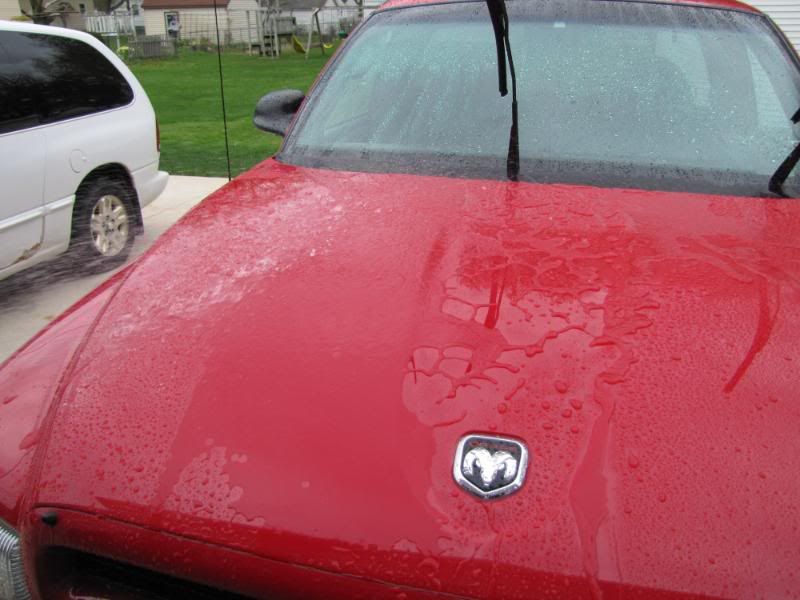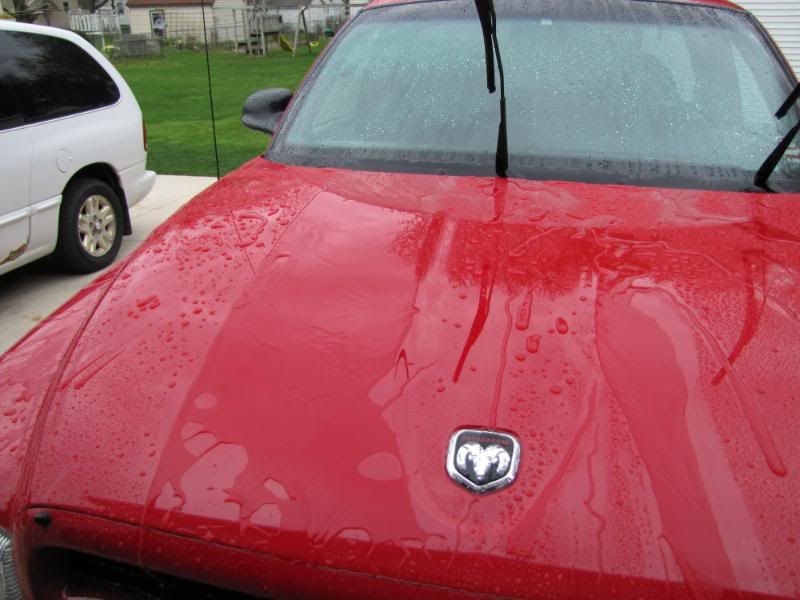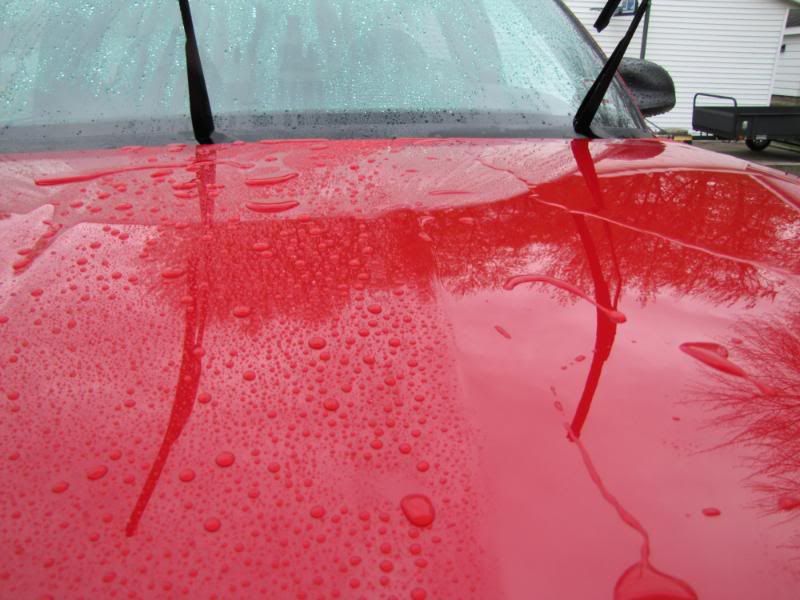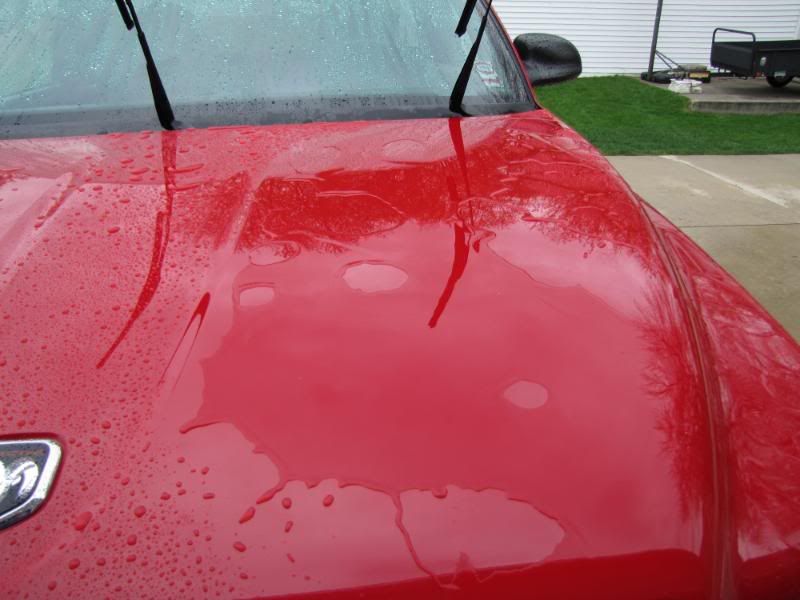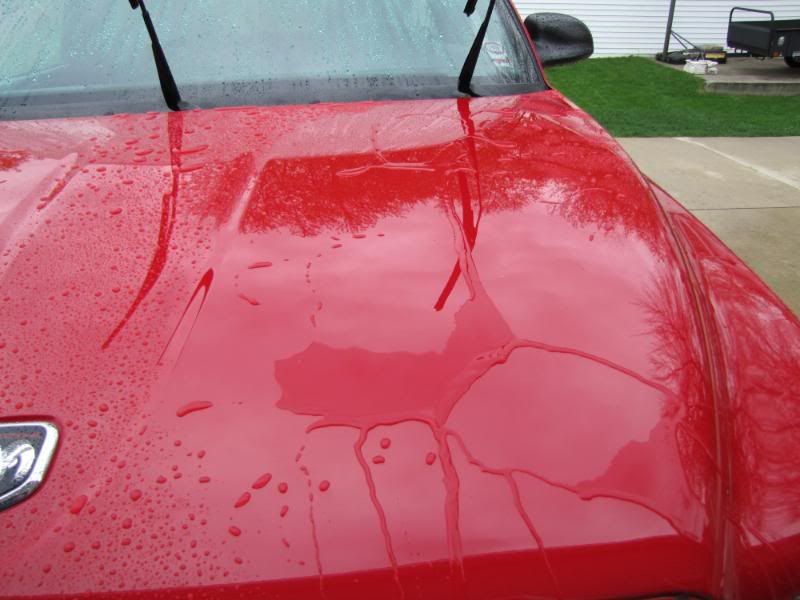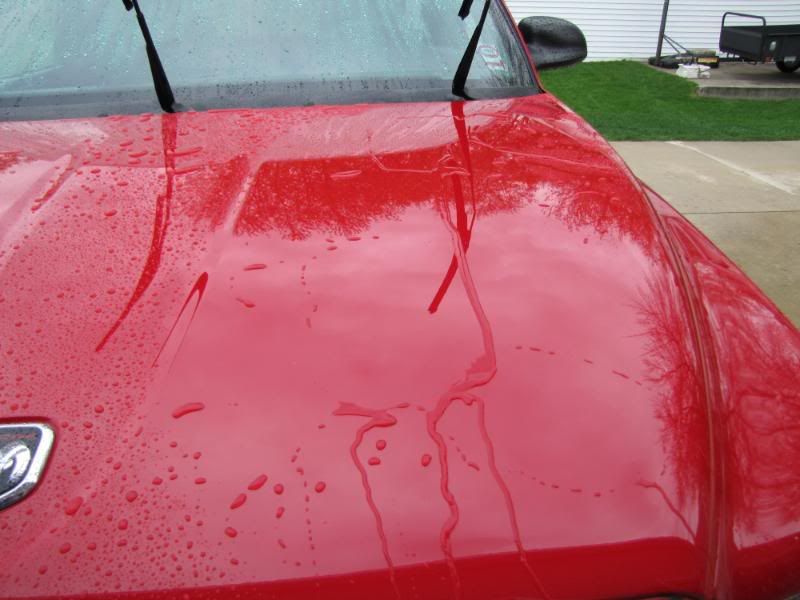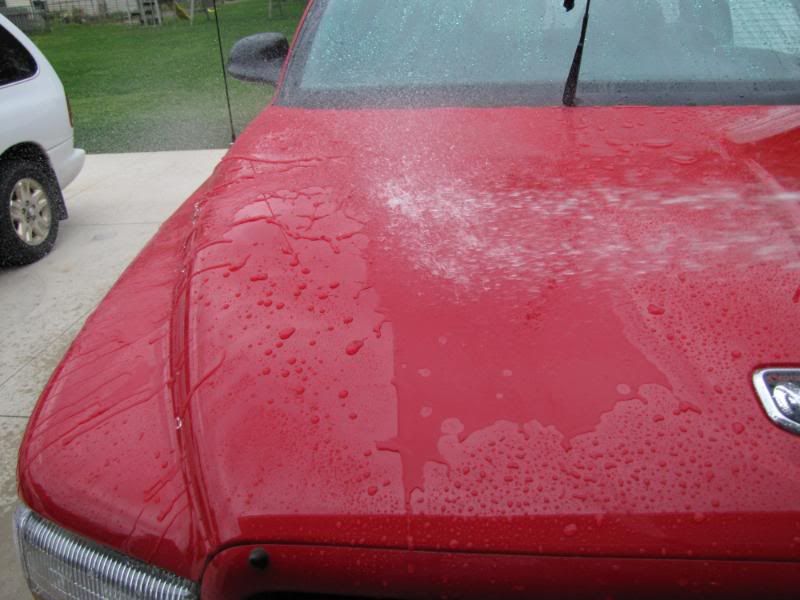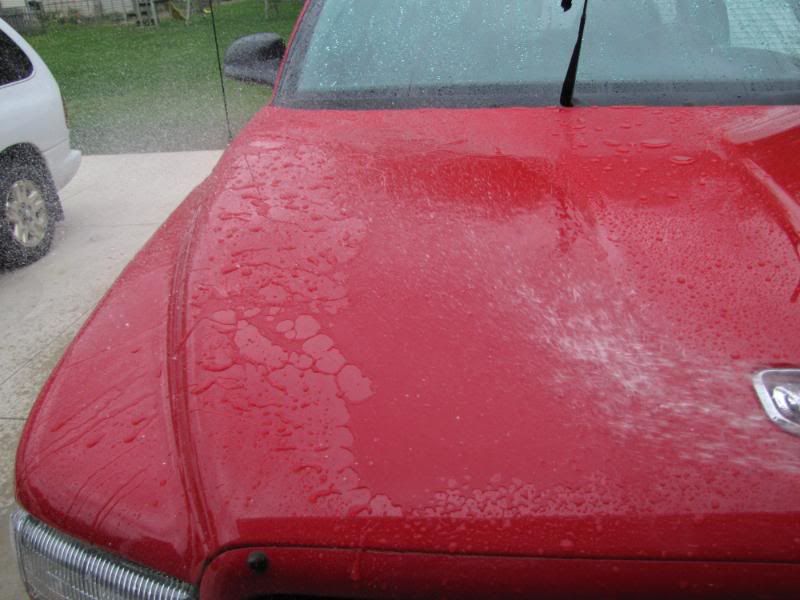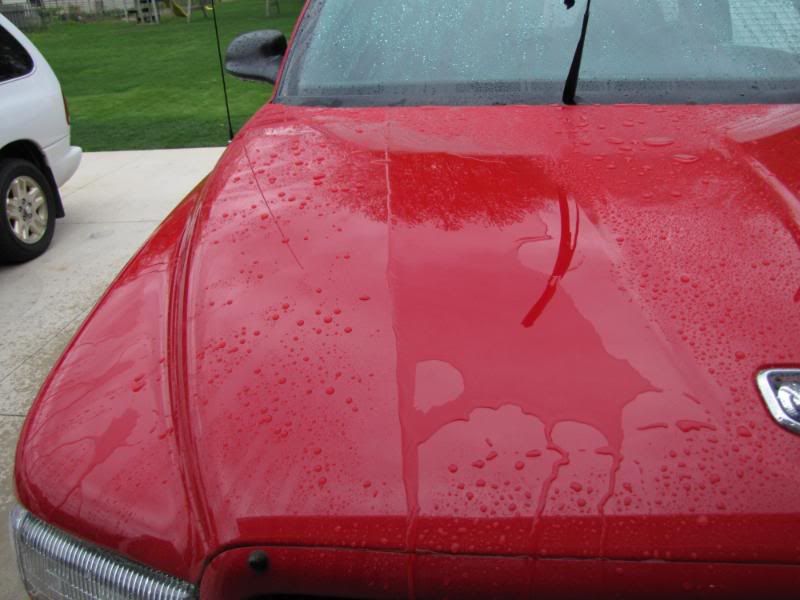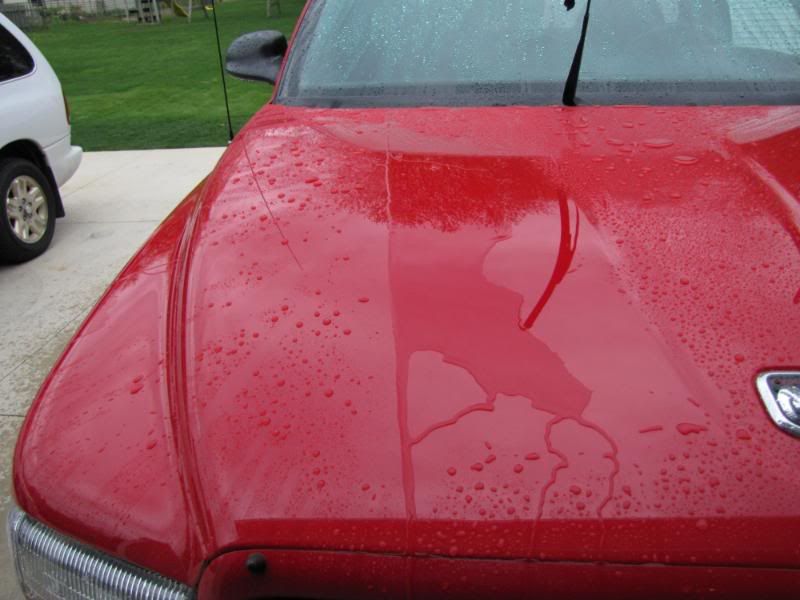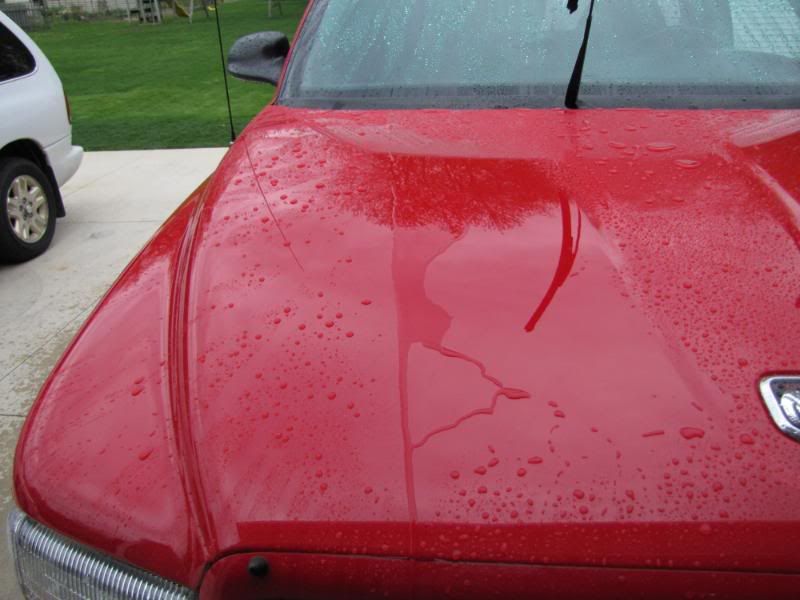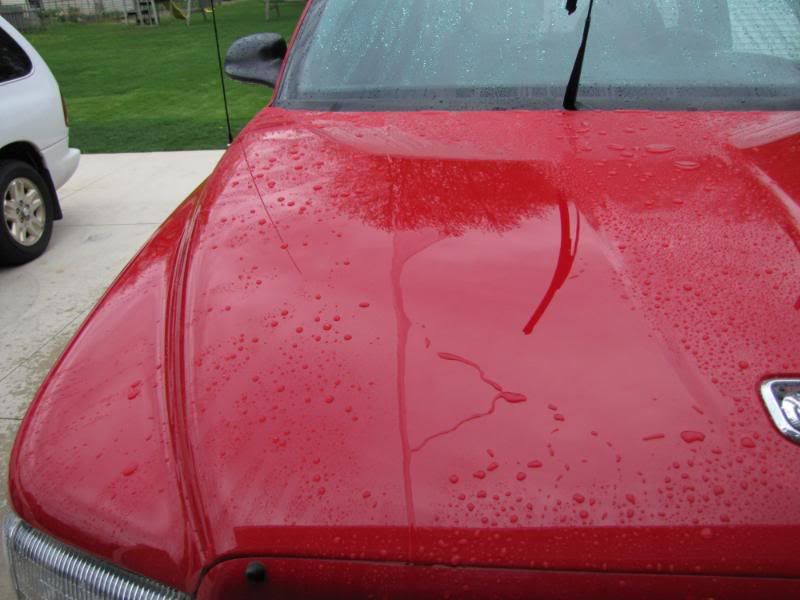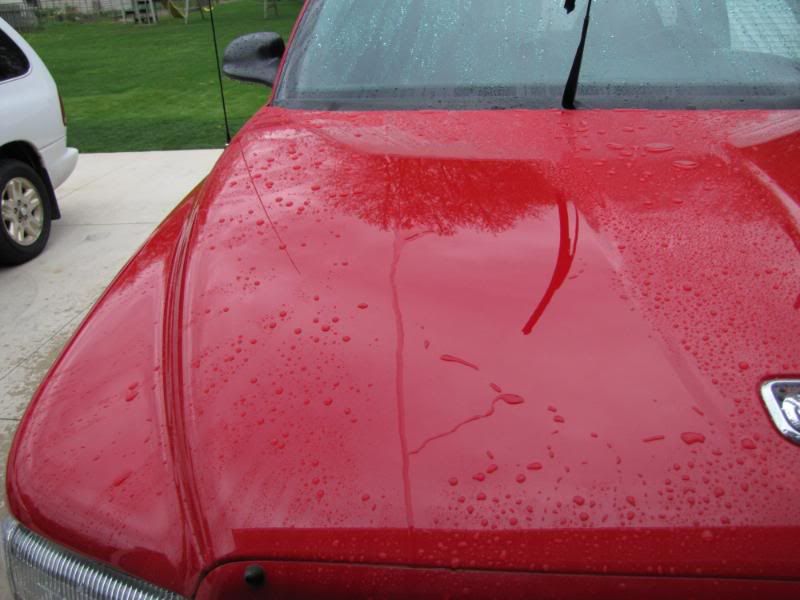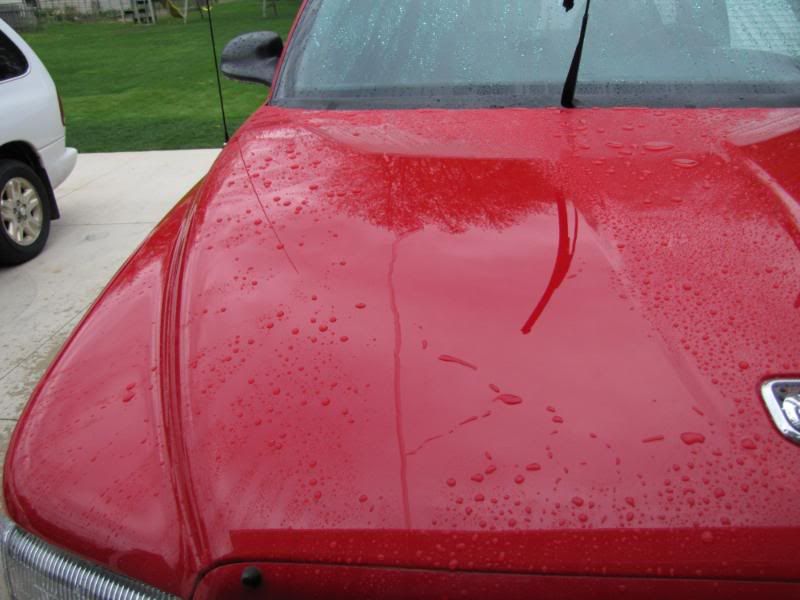Leadfootluke
New member
I have a growing collection of waxes and sealants [although small comparatively speaking]. I have only done detailing on my personal vehicles, but I am always looking to see how different products look on different finishes. Once again, hyperlinked to the website I bought them from and originally posted this thread on.
In this test, I have 5 of the Waxes/Sealants that I presently own being tested.
Collinite Insulator Wax No. 845

I find this wax to be extremely easy to apply. After I have owned it for nearly 6 months and kept it at room temperature and transfered it to my 8oz dispensing bottle, it has retained a warm butter consistency. It spread very easily and removal is quite easy as well. After 24 hours of application and spraying the surface, the water forms into small circular beads. When greater quantities of water is sprayed, the beads collide and run off leaving the surface almost completely bare, even without flooding. In comparison to the unprotected surface next to it, it is actually noticeably darker and deeper. Under the right conditions the difference could probably be caught in a picture.
Collinite Super Doublecoat Auto Wax No. 476S

This wax is very hard. Even being kept in warm storage the wax is still rock hard. After moving the foam applicator over the surface in swiping motions, the wax melts onto the pad and can be easily applied. Per the collinite website: "The 845 and 476s are made with the same ingredients, but the 476s lasts longer due to the fact that it has a higher concentration of natural and synthetic waxes. This is why the 476s is tougher to work with. The 845 has been Collinite’s overall best seller for 20 years due to the fact that it has excellent durability combined with an ease of use." This is exemplified through the use of both waxes. 476 is much harder to use in comparison to 845, but still not difficult. When spraying the surface, the water forms beads. Unlike 845, 476 likes to stay in beads instead of sheeting like 845 did when water was sprayed heavily on it.
Optimum Car Wax

An extremely user friendly wax, OCW can be applied by spraying the surface and wiping it off with a microfiber towel. The surface reminds me of a waxed, then QD'd finish. Because I have other waxes that are applied in a more traditional sense, I like to use OCW over existing waxes to boost the protection and looks. OCW creates beads on the surface which are a little larger than beads formed by the Collinite products. I am still testing the durability, but since i have began using it a month ago, the protection is still remaining.
Optimum Opti-Seal

Probably the easiest sealant to use. Just wipe on and walk away. It is hard to not use too much product with OOS. Just remove any excess OOS with a MF if you can see streaks. OOS creates uniform, larger beads that sheet off when on vertical or angled surfaces. I have not tested OOS without topping it with OCW, but I hope to see how the looks and performances differ.
Wolfgang Deep Gloss Paint Sealant 3.0
I received this for free from a contest. It is considered a quality sealant and I am hoping to find out how well it performs. DGPS is a little harder to apply than the other waxes or sealants and a little harder to remove. In terms of ease, it was not as nice as the others. It did not sheet as well as OOS, but hopefully the durability will shine through. The beads on horizontal surfaces were fairly large as well.
Pictures
My entire truck had OCW on it from last months wash/wax. Still holding up on the drivers side door.

Stripped the wax from the hood :biggrin:
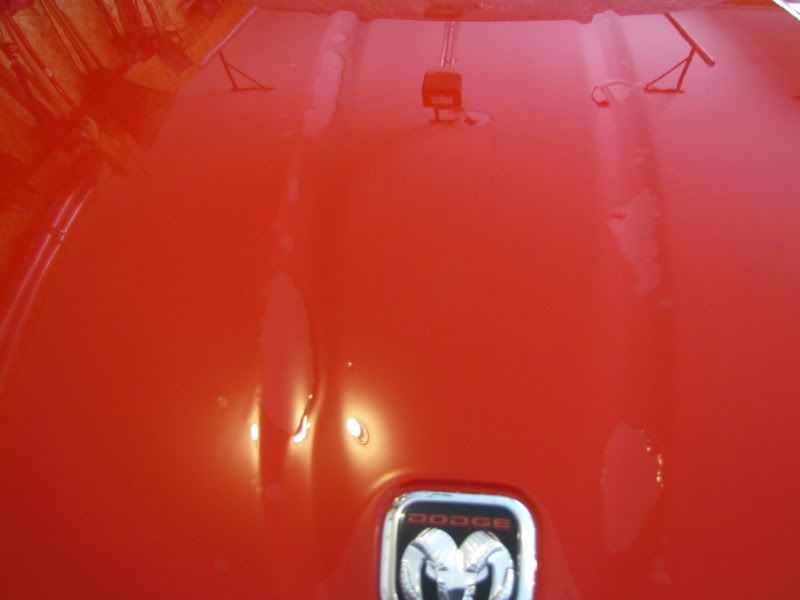
The surface was clayed a few months ago and has had an LSP on it since. To strip the wax, I used TW Liquid Clay bar [found it in the cabinets]. Then rinsed the surface and sprayed with a diluted degreaser and washed the surface with ONR to wash it all off. I then gave it an IPA wipedown before applying the waxes and sealants.
The 5 next to each other.
845, OOS, 476, DGPS, OCW
The outsides were split with the tape, the middle 3 were separated by the body lines
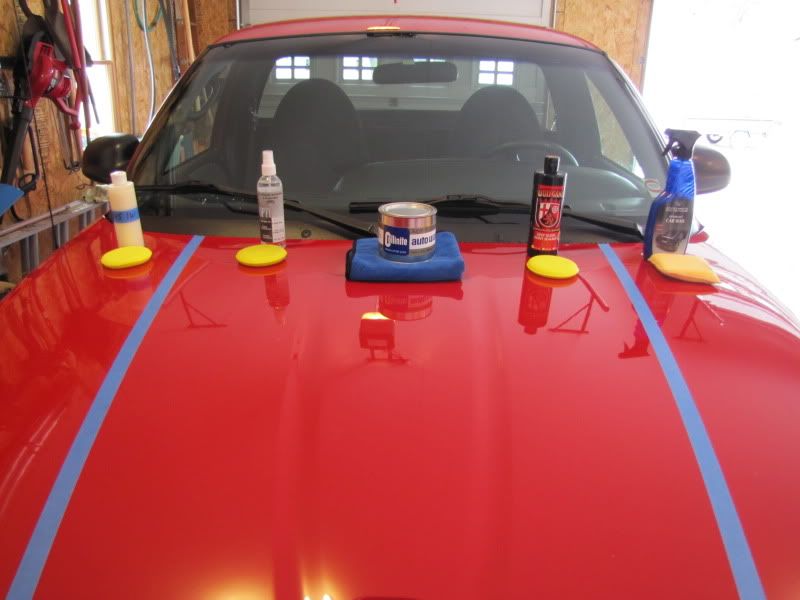
This first shot has lightly misted water on the surface, you can see the differences in the products.
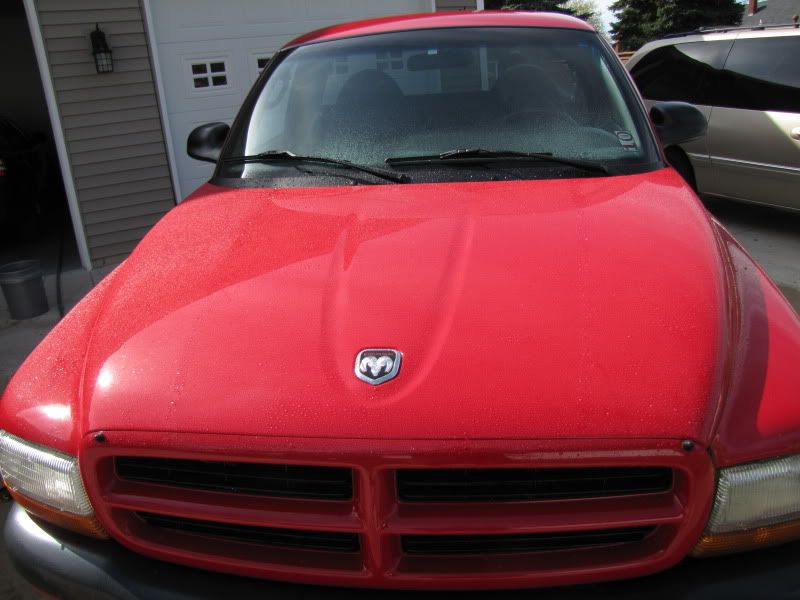
Another similar shot with added contrast. It helped to define the different sections. There was more water added to the surface, enough so some surface began to run while other held the water.

Collinite 845
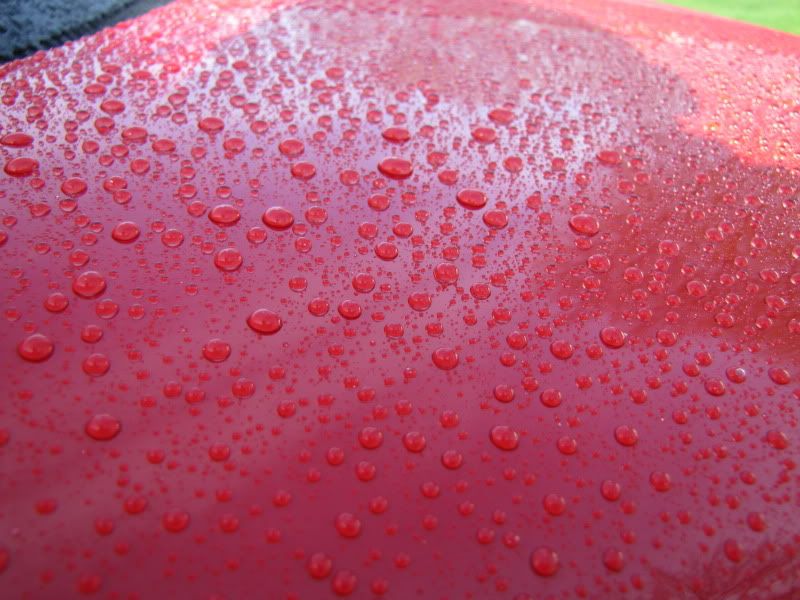
Beads with beads of air in them? :huh:
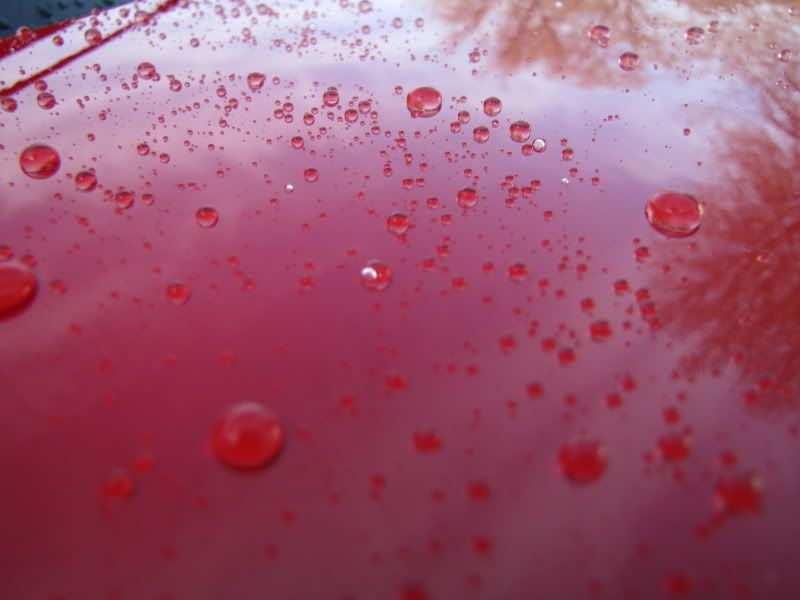
I hope to keep up with the testing to see which not only protects the longest, but retains it's slickness. Hope you enjoy it! :clap:
In this test, I have 5 of the Waxes/Sealants that I presently own being tested.
Collinite Insulator Wax No. 845
I find this wax to be extremely easy to apply. After I have owned it for nearly 6 months and kept it at room temperature and transfered it to my 8oz dispensing bottle, it has retained a warm butter consistency. It spread very easily and removal is quite easy as well. After 24 hours of application and spraying the surface, the water forms into small circular beads. When greater quantities of water is sprayed, the beads collide and run off leaving the surface almost completely bare, even without flooding. In comparison to the unprotected surface next to it, it is actually noticeably darker and deeper. Under the right conditions the difference could probably be caught in a picture.
Collinite Super Doublecoat Auto Wax No. 476S
This wax is very hard. Even being kept in warm storage the wax is still rock hard. After moving the foam applicator over the surface in swiping motions, the wax melts onto the pad and can be easily applied. Per the collinite website: "The 845 and 476s are made with the same ingredients, but the 476s lasts longer due to the fact that it has a higher concentration of natural and synthetic waxes. This is why the 476s is tougher to work with. The 845 has been Collinite’s overall best seller for 20 years due to the fact that it has excellent durability combined with an ease of use." This is exemplified through the use of both waxes. 476 is much harder to use in comparison to 845, but still not difficult. When spraying the surface, the water forms beads. Unlike 845, 476 likes to stay in beads instead of sheeting like 845 did when water was sprayed heavily on it.
Optimum Car Wax

An extremely user friendly wax, OCW can be applied by spraying the surface and wiping it off with a microfiber towel. The surface reminds me of a waxed, then QD'd finish. Because I have other waxes that are applied in a more traditional sense, I like to use OCW over existing waxes to boost the protection and looks. OCW creates beads on the surface which are a little larger than beads formed by the Collinite products. I am still testing the durability, but since i have began using it a month ago, the protection is still remaining.
Optimum Opti-Seal

Probably the easiest sealant to use. Just wipe on and walk away. It is hard to not use too much product with OOS. Just remove any excess OOS with a MF if you can see streaks. OOS creates uniform, larger beads that sheet off when on vertical or angled surfaces. I have not tested OOS without topping it with OCW, but I hope to see how the looks and performances differ.
Wolfgang Deep Gloss Paint Sealant 3.0
I received this for free from a contest. It is considered a quality sealant and I am hoping to find out how well it performs. DGPS is a little harder to apply than the other waxes or sealants and a little harder to remove. In terms of ease, it was not as nice as the others. It did not sheet as well as OOS, but hopefully the durability will shine through. The beads on horizontal surfaces were fairly large as well.
Pictures
My entire truck had OCW on it from last months wash/wax. Still holding up on the drivers side door.

Stripped the wax from the hood :biggrin:

The surface was clayed a few months ago and has had an LSP on it since. To strip the wax, I used TW Liquid Clay bar [found it in the cabinets]. Then rinsed the surface and sprayed with a diluted degreaser and washed the surface with ONR to wash it all off. I then gave it an IPA wipedown before applying the waxes and sealants.
The 5 next to each other.
845, OOS, 476, DGPS, OCW
The outsides were split with the tape, the middle 3 were separated by the body lines

This first shot has lightly misted water on the surface, you can see the differences in the products.

Another similar shot with added contrast. It helped to define the different sections. There was more water added to the surface, enough so some surface began to run while other held the water.

Collinite 845

Beads with beads of air in them? :huh:

I hope to keep up with the testing to see which not only protects the longest, but retains it's slickness. Hope you enjoy it! :clap:

